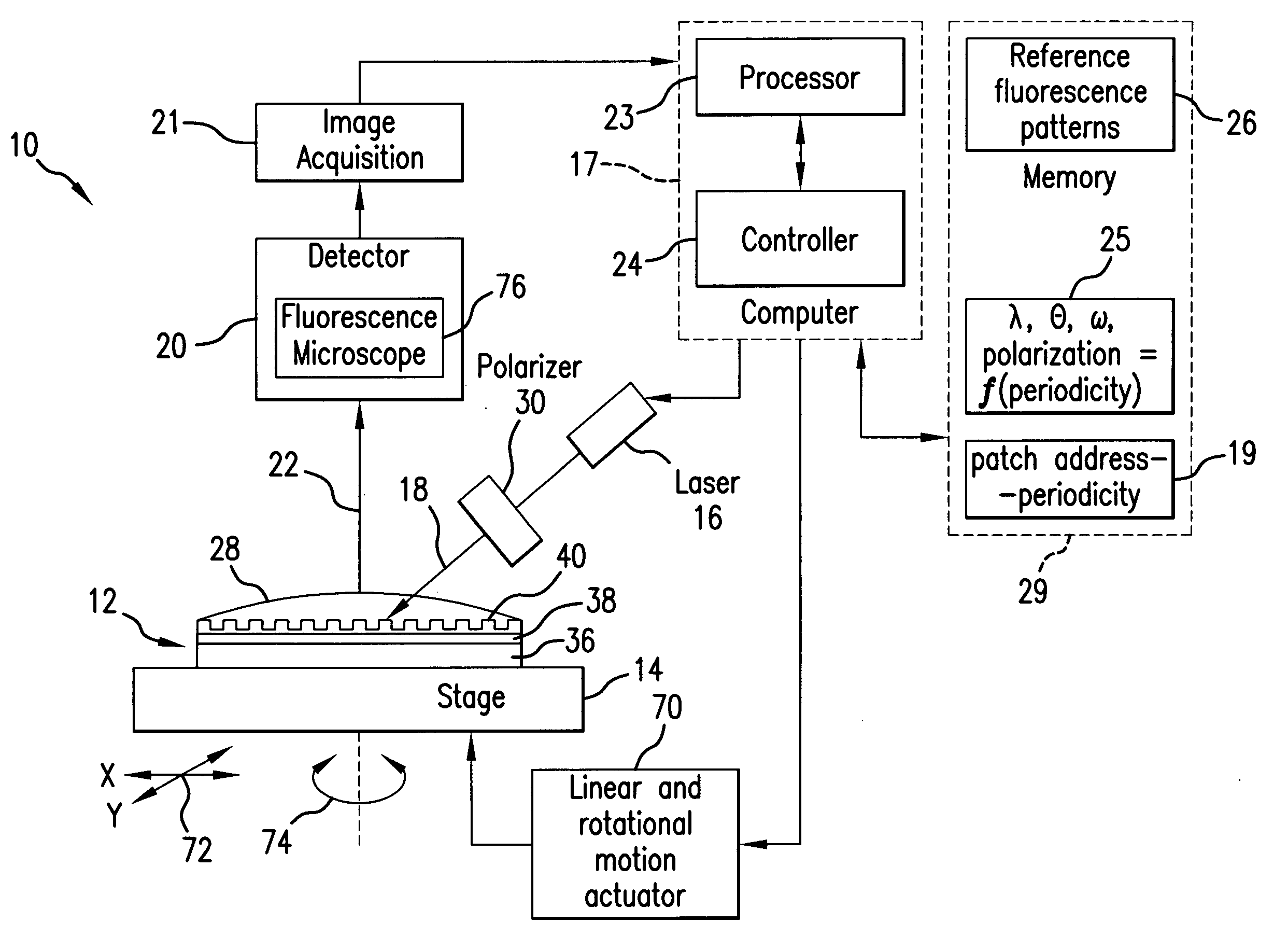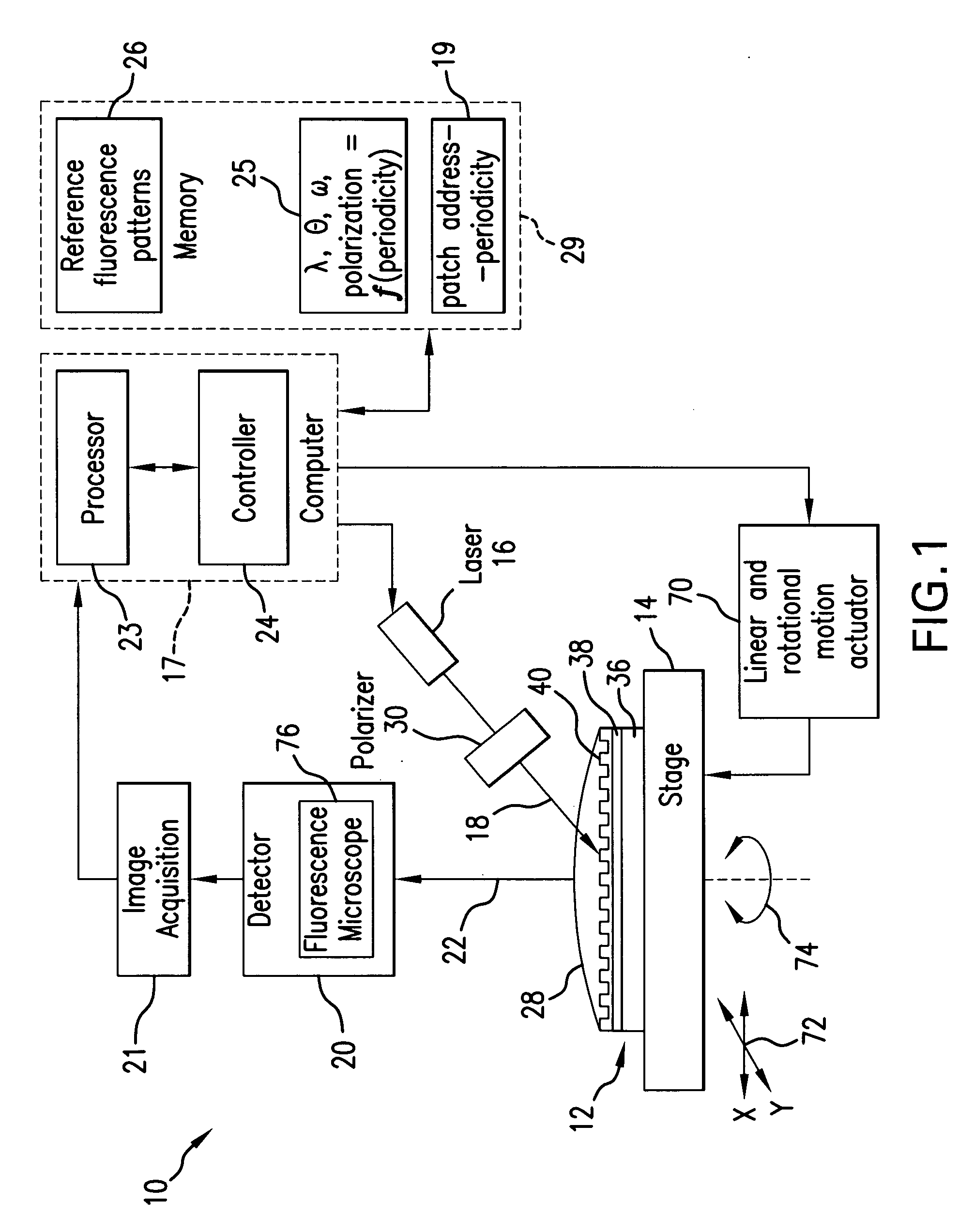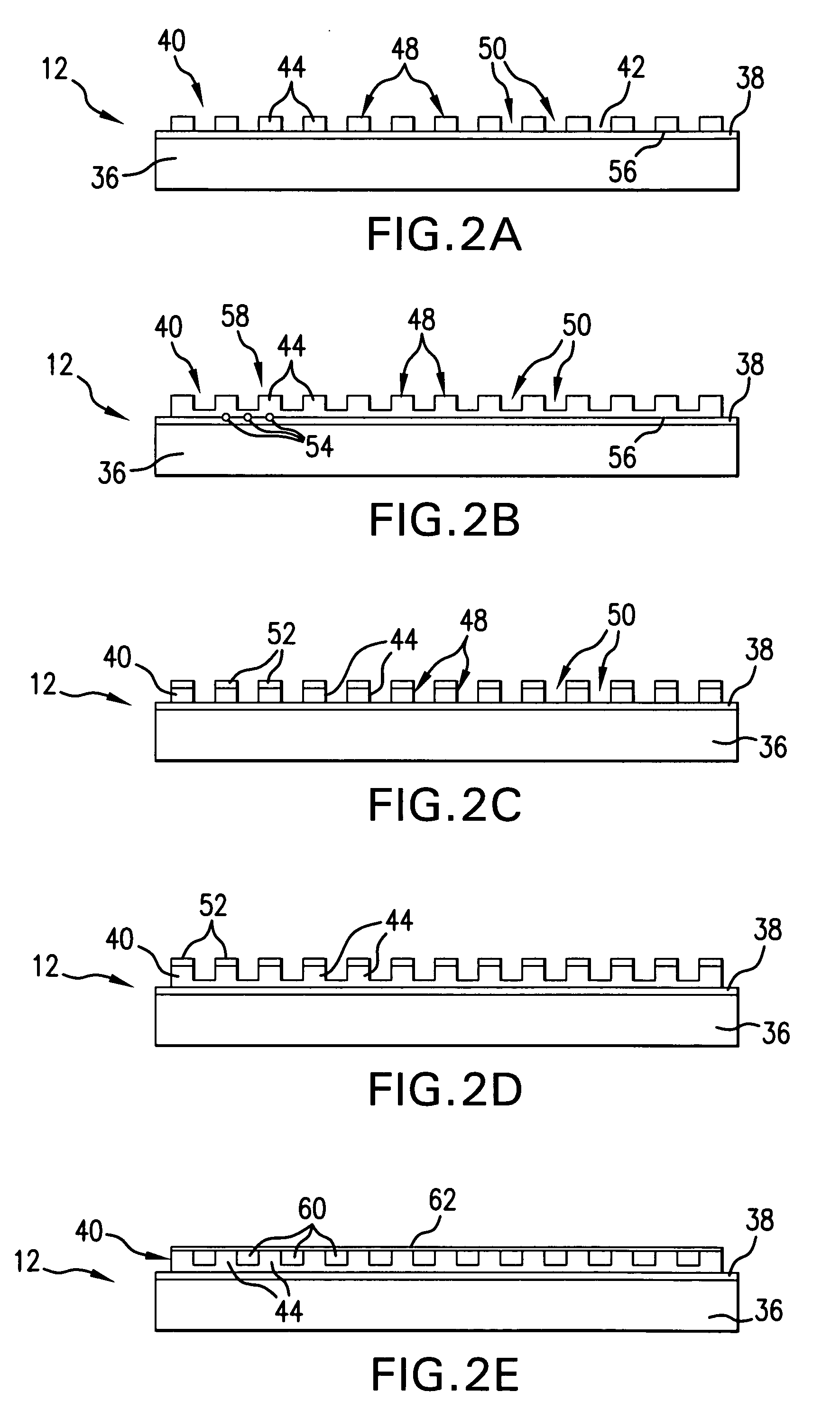Sensor system with surface-plasmon-polariton (SPP) enhanced selective fluorescence excitation and method
a technology of surface plasmon polariton and fluorescence excitation, which is applied in the field of fluorescence detection, can solve the problems of difficult and inflexible detection geometry, and difficult to use in conventional fluorescence detection
- Summary
- Abstract
- Description
- Claims
- Application Information
AI Technical Summary
Benefits of technology
Problems solved by technology
Method used
Image
Examples
Embodiment Construction
[0052]Referring to FIG. 1, a sensor system 10 of the present invention includes an active sensor chip 12 positioned on a stage 14 and secured thereto, a source of excitation light 16 for generating an excitation light beam 18, a computer 17, a detector unit 20 for detecting a fluorescence signal 22, an image acquisition unit 21, a processor unit 23 for processing the detected fluorescence signal and controlling the parameters of sensor system 10, as will be further described in detail. The system 10 further includes a controller unit 24 actuated by the processor unit 23 to apply the control parameters to the excitation source 16 and to the stage 14, as will be presented in detail further herein.
[0053]The computer 17 communicates with a database 25 which contains controlling parameters and relationships therebetween to apply the latter to the system 10 during interrogation of the active sensor chip 12, as will be described in further paragraphs. The computer 17, specifically the proc...
PUM
 Login to View More
Login to View More Abstract
Description
Claims
Application Information
 Login to View More
Login to View More - R&D
- Intellectual Property
- Life Sciences
- Materials
- Tech Scout
- Unparalleled Data Quality
- Higher Quality Content
- 60% Fewer Hallucinations
Browse by: Latest US Patents, China's latest patents, Technical Efficacy Thesaurus, Application Domain, Technology Topic, Popular Technical Reports.
© 2025 PatSnap. All rights reserved.Legal|Privacy policy|Modern Slavery Act Transparency Statement|Sitemap|About US| Contact US: help@patsnap.com



